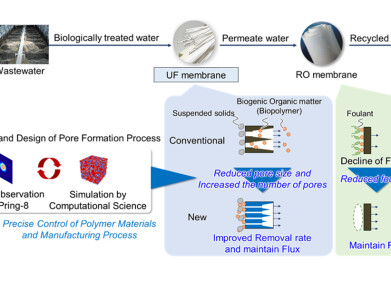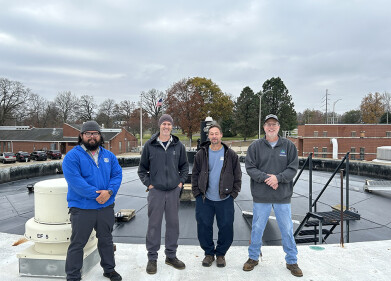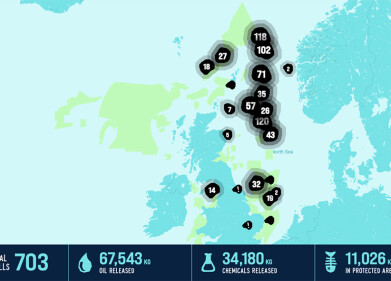Water/Wastewater
Environmental researchers from Linnaeus University map out marine pollution in the Baltic Sea
Jun 17 2020
Marcelo Ketzer and his research team have just returned from a two-week expedition on the Baltic Sea and this week it was time for them to leave again. The aim is, among other things, to map out the occurrence of metal pollution and methane gas in the seabed.
Environmentally hazardous metals in the waters and sediments of the Baltic Sea is a major problem. In the project “Accumulation of metals in Baltic Sea sediment: significance for environmental surveillance and action initiatives” the researchers study, among other things, the levels of arsenic, mercury, and cadmium in the sediments.
The researchers got the opportunity to take part in an ocean expedition on the newly-inaugurated research vessel Svea, led by Stockholm University (SU) and Geological Survey of Sweden (SGU – that is to say, the authority with responsibility for questions relating to bedrock, soil, and groundwater in Sweden). The expedition starts in Norrbotten in the far north of Sweden and ends in Skåne in the far south of Sweden, and the group will make stops for sampling in 14 different places along the route.
On board the vessel, the researchers from Linnaeus University work on a project together with SGU. During the voyage, the researchers will collect samples and study water temperature, salinity, oxygen levels, sediment, methane gas, organic material, and other chemical parameters.
“The expeditions on the research vessel Svea will give us a better understanding of how these metals are stored and accumulated in the seabed and we will be able to collect material for two year’s research”, explains Marcelo Ketzer, professor of environmental science at Linnaeus University.
These data will also be used for studies by Ketzer’s colleagues Sina Shahabi Ghahfarokhi, doctoral student who studies metal pollution, and Mahboubeh Rahmati Abkenar, postdoctoral fellow who studies methane in the seabed, as well as Leonie Jaeger, exchange student from Germany.
The objectives are to find out how much environmentally hazardous metals have gathered in the seabed, but also to study how much methane gas there are and how much of this that is emitted from the seabed into the water and air and, thereby, increasing the level of greenhouse gas in the atmosphere.
“Thanks to new equipment that we were granted major project funding for last summer, it is now possible for us at Linnaeus University, for the first time, to carry out the type of measurements needed to be able to analyse and map out the occurrence of methane gas in sediment and water. This will give us new opportunities to better understand climate change in the ocean caused by greenhouse gases”, Ketzer concludes. The project will also generate data that can help other research teams study metal pollution in fish and marine animals, which end up on our plates.
Marcelo Ketzer and his colleagues on the project are expected to publish their first results by the end of this year.
Events
Apr 10 2025 Beijing, China
Apr 10 2025 Beijing, China
Apr 15 2025 Moscow, Russia
Apr 21 2025 Shanghai, China
May 11 2025 Vienna, Austria














